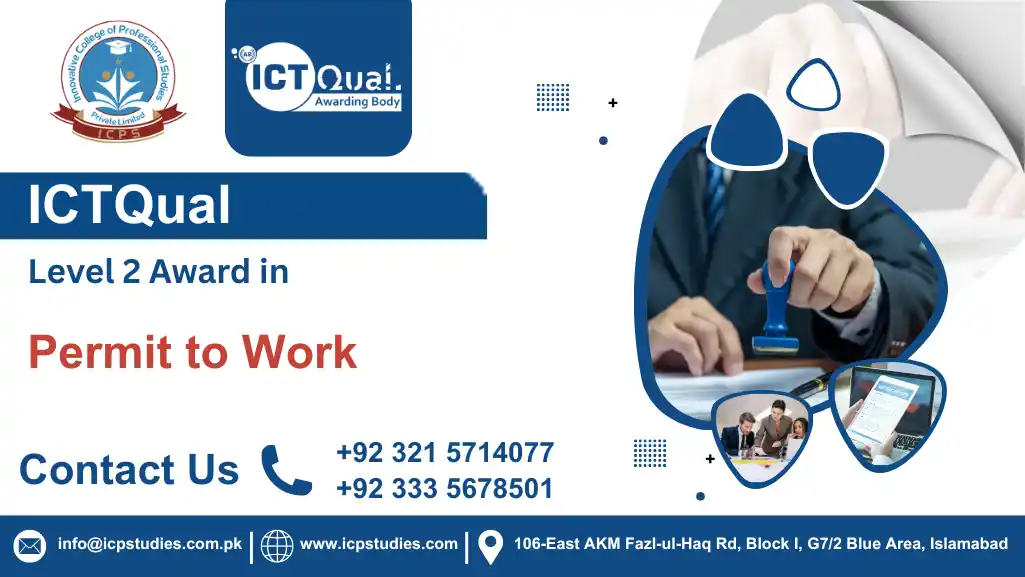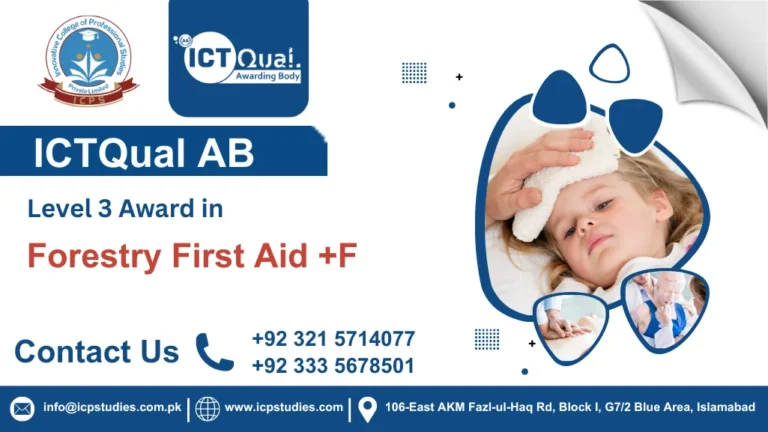The ICTQual Level 2 Award in Permit to Work is a vital qualification designed to promote safe working practices in environments where formal authorisation is required before undertaking potentially hazardous tasks. This qualification equips professionals with the knowledge and practical skills needed to understand, issue, and operate within permit to work systems in accordance with health and safety regulations.
Workplaces that involve high-risk activities—such as electrical work, confined space entry, hot work, and maintenance operations—require stringent safety protocols. This course supports organisations in controlling these risks by ensuring that employees, supervisors, and contractors understand and adhere to structured permit to work systems, helping to prevent accidents, injuries, and regulatory breaches.
The ICTQual Level 2 Award in Permit to Work provides an essential foundation in understanding the principles, roles, and responsibilities involved in permit to work systems. The course covers the development, authorisation, implementation, and closure of permits, while reinforcing the importance of communication, hazard recognition, and record-keeping.
All About ICTQual Level 2 Award in Permit to Work
Course Overview
The ICTQual Level 2 Award in Permit to Work is a professionally designed qualification that provides essential knowledge and skills for individuals working in environments where formal authorisation is required before starting potentially hazardous tasks. This ICTQual Level 2 Award in Permit to Work focuses on the permit to work system as a key component of safe working practices, helping organisations minimise risk, prevent accidents, and maintain regulatory compliance.
Through structured learning, participants will gain a solid understanding of when a permit to work is necessary, how to complete one correctly, and how to follow associated safety procedures. The course covers various types of permits, including those for hot work, confined spaces, electrical tasks, and maintenance activities. It also emphasises the importance of communication and coordination between all parties involved.
This qualification is suitable for workers, supervisors, and contractors in industries such as construction, engineering, manufacturing, and oil and gas. It helps reinforce a safety-first mindset by ensuring all work is clearly defined, authorised, and monitored under controlled conditions.
By completing the ICTQual Level 2 Award in Permit to Work, learners not only enhance their personal safety awareness but also contribute to a culture of accountability and responsibility in high-risk work environments.
Study Units
- Introduction to Permit-to-Work Systems
- Types of Permits and Their Applications
- Roles and Responsibilities in Permit-to-Work Procedures
- Permit Issuance, Monitoring, and Closure
- Hazard Identification and Risk Assessment
- Compliance with Health and Safety Regulations
Minimum Age:
Learners must be at least 18 years of age at the time of enrolment.
Educational Background:
There are no formal academic qualifications required. However, a basic understanding of workplace safety concepts will be beneficial.
Work Experience:
While prior experience in construction, maintenance, or industrial environments is helpful, this course is suitable for both new entrants and those currently working in roles involving high-risk tasks.
Language Proficiency:
Learners should possess a good command of the English language to understand the training content, complete assessments, and effectively communicate within safety-critical environments.
The ICTQual Level 2 Award in Permit to Work is designed for individuals who are involved in, or responsible for, high-risk work activities that require formal authorisation. It is particularly relevant for those working in sectors where safety is critical and permit to work systems are routinely implemented.
This course is intended for:
- Employees involved in hazardous operations requiring permit-based control
- Site supervisors and foremen overseeing high-risk work areas
- Contractors and sub-contractors working in industrial or construction settings
- Maintenance personnel performing repair or installation tasks
- Health and safety representatives ensuring compliance with safe systems of work
- New entrants seeking foundational knowledge of permit to work systems
- Organisations aiming to enhance their workforce’s competency in workplace safety procedures
Learning Outcomes
Introduction to Permit-to-Work Systems
- Understand the purpose and importance of permit-to-work systems in managing high-risk activities
- Recognise how permit systems contribute to overall workplace safety and operational control
- Identify the key components and structure of a typical permit-to-work system
Types of Permits and Their Applications
- Distinguish between various types of permits such as hot work, confined space, electrical, and maintenance
- Understand the specific circumstances under which each permit type is required
- Apply knowledge of permit types to real-world scenarios within different industries
Roles and Responsibilities in Permit-to-Work Procedures
- Identify the key roles involved in the permit-to-work process, including issuers, recipients, and supervisors
- Understand the responsibilities associated with each role to ensure compliance and safety
- Promote accountability and coordination among all personnel involved in high-risk tasks
Permit Issuance, Monitoring, and Closure
- Learn the correct procedures for issuing, authorising, and approving work permits
- Understand the importance of monitoring permitted work to ensure adherence to safety requirements
- Execute proper closure of permits, including verification that work has been completed safely and records maintained
Hazard Identification and Risk Assessment
- Identify common workplace hazards associated with tasks requiring permits
- Conduct basic risk assessments to determine necessary safety controls
- Use permit systems as a tool to manage and mitigate identified risks effectively
Compliance with Health and Safety Regulations
- Understand relevant legal and regulatory requirements governing permit-to-work systems
- Apply national and organisational safety standards in the implementation of permit processes
- Demonstrate commitment to regulatory compliance and best practices in safety management
FAQs ICTQual Level 2 Award in Permit to Work







